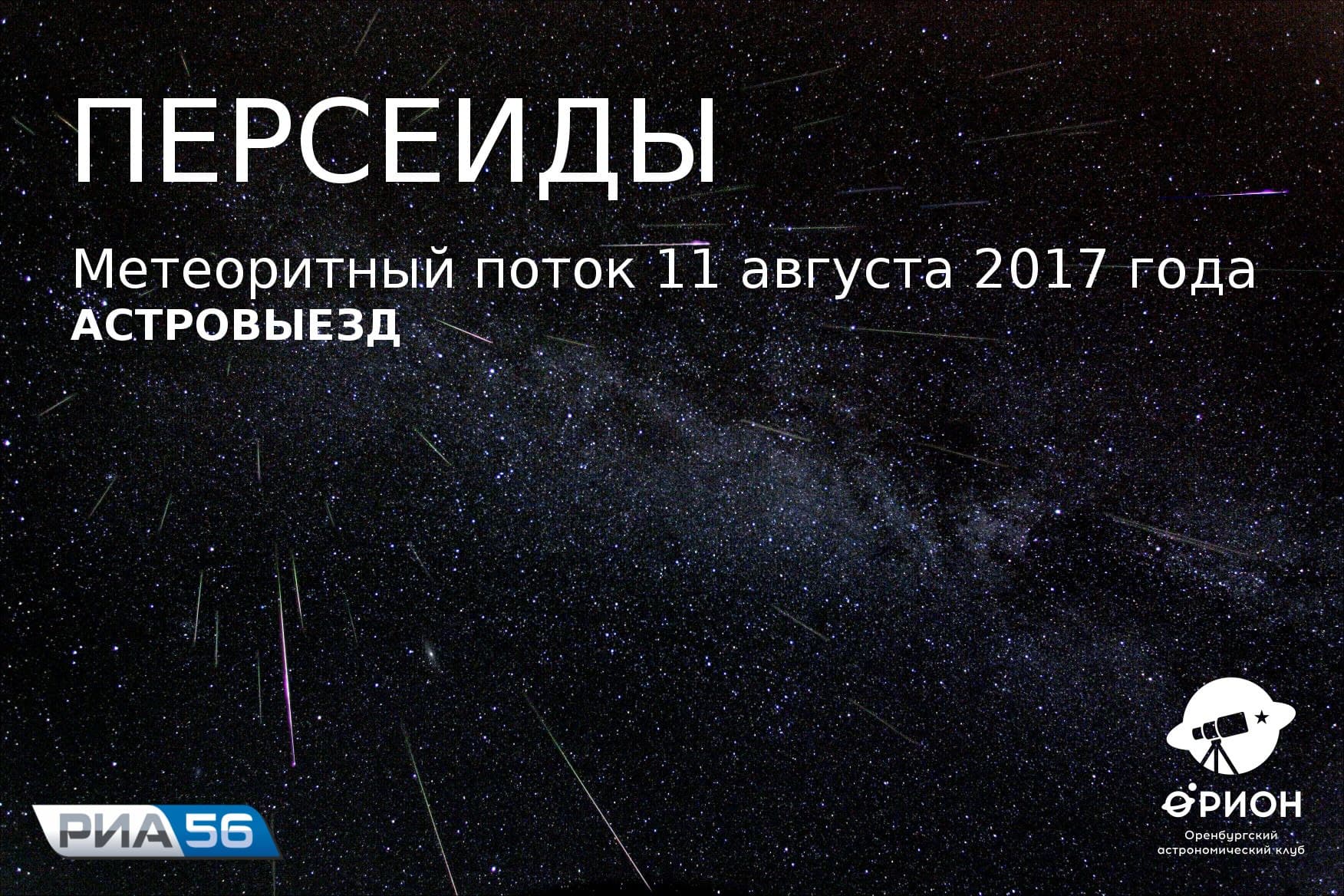
August 11, 2017 at 20:00 Orenburg Planetarium and the Orion Astronomical Club invite you to a joint astronomical trip as part of the RIA56 project "Look at the Stars".
This is a unique opportunity to see the most powerful star stream of the year - the Perseids meteor shower, admire the warm August night and listen to a fascinating lecture about space in the open air.
Event details
Organizers and support
Organizers:
- Astronomical community "Orion"
- Orenburg Planetarium
- RIA56 project "Look at the Stars"
Event information
Venue:
- Location: Mount Goryun, 40 km from Orenburg along the Saraktash highway.
- For those who don't know how to get there: meet at 20:00 at the monument to Yuri Gagarin (Gagarin Avenue) in the pocket on the way to the center.
Date and time: 08/11/2017, starts at 21:00
Terms of participation:
- Participation is paid: 200 rubles per person.
- Children - free.
- It is recommended to have a personal vehicle. If this is not possible, you can find free seats with other participants.
Necessary things:
- Warm clothes (it is cool at night).
- A camping mat or chair for comfortable seating.
- Tea in a thermos, cookies, candies.
- Good mood!
How the astronomical trip goes:
- The first part of the program is a lecture on meteor showers, comets, asteroids and their role in the history of the Earth.
- Part two — a tour of the night sky, legends and orientation among the constellations.
- Part three — observations through telescopes: the Moon, bright stars, double stars, star clusters.
Results of the astronomical trip
On the night of August 11, 2017, more than 150 amateur astronomers gathered on Mount Goryun to observe one of the most anticipated astronomical events of the year — the Perseids meteor shower.
Lectures and stories:
- Orenburg Planetarium lecturer Ekaterina Guskova gave a fascinating lecture on meteorites, comets and asteroids. Participants learned the difference between a meteor and a meteorite, what comets are and what meteor showers can be observed throughout the year. - Sergey Medvedev and Mikhail Perevalov spoke about the largest meteorites that fell to Earth: Chelyabinsk, Tunguska and Sikhote-Alin. A scenario of the events that would develop during the fall of a large asteroid with a diameter of 10 km was presented, and the remaining impact craters on the Earth's surface were shown.
Observations:
- Vladimir Malina helped the participants to see through the telescopes the brightest stars and asterisms of the starry sky that they were able to see through the clouds.
- At the end of the evening, the clouds cleared, revealing a view of the stars and the Moon. All the telescopes were aimed at these objects, and the participants observed them for a long time.
Equipment:
- 5 telescopes were operating at the astronomical site:
- 250 mm Dobson reflector with SynScan computer control.
- 200 mm computerized reflector.
- 150 mm reflector on equatorial mounts. - 80 mm computer-controlled refractor (belongs to Vladimir Ivanovich Rogozin).
- 150 mm Maksutov-Cassegrain telescope (belongs to Vladimir Ivanovich Rogozin).
Quiz:
- At the end of the lecture, a quiz was held, the winners of which received detailed maps of the Moon's surface with labeled craters, seas and oceans.
"We are glad that we were able to gather so many astronomy enthusiasts on this August night. Until next time under the starry sky!"